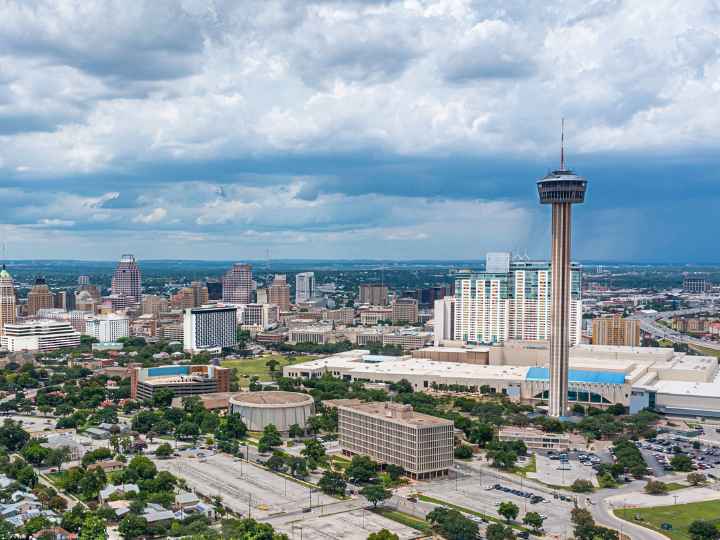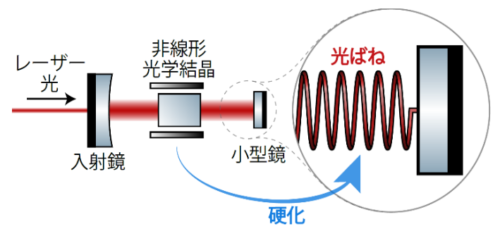2024-04-04 ヒューストン大学(UH)

High levels of ozone and particulates in San Antonio air can put the city into the EPA’s nonattainment status. In a series of air tests in the state’s largest urban areas, University of Houston researchers found air troubles in Dallas and Houston, too, with different challenges affecting each city. Photo: Michael Warren / Getty Images
<関連情報>
- https://uh.edu/news-events/stories/2024/april/04042024-sanantonio-air-pollution.php
- https://www.sciencedirect.com/science/article/abs/pii/S1352231024000372
エアマスの歴史、夜間の粒子状有機硝酸塩、気象学が都市のSOA形成率に影響を与える Airmass history, night-time particulate organonitrates, and meteorology impact urban SOA formation rate
Fangzhou Guo, Alexander A.T. Bui, Benjamin C. Schulze, Qili Dai, Subin Yoon, Sujan Shrestha, Henry W. Wallace, Nancy P. Sanchez, Sergio Alvarez, Matthew H. Erickson, Rebecca J. Sheesley, Sascha Usenko, James Flynn, Robert J. Griffin
Atmospheric Environment Available online:24 January 2024
DOI:https://doi.org/10.1016/j.atmosenv.2024.120362
Highlights
•Two classes of oxygenated organic aerosol (less and more-oxidized OOA, LO and MO) constitute the bulk of OA mass.
•The rate of pON formation at night contributes strongly to the rate of LO-OOA formation at night.
•Temperature and photochemistry influence the rate of LO-OOA formation during the day.
Abstract
With respect to air quality, the San Antonio metropolitan area, with a population of 1.45 million and the second largest city in Texas, has been designated as non-attainment by the United States Environmental Protection Agency in recent years. Despite the operation of multiple stationary air quality monitoring sites by the Texas Commission on Environmental Quality, the in-situ measurements of submicron aerosol and its precursors in the region is limited. To better understand the formation of secondary organic aerosol (SOA) in the San Antonio urban core, we conducted observations of a range of trace gases, volatile organic compounds, submicron aerosol, and meteorological parameters in May 2017. Data from a High-Resolution Time-of-Flight Aerosol Mass Spectrometer (HR-ToF-AMS) show that organic aerosol (OA) was the dominant component of non-refractory submicron particulate matter (average±1σ, 55 ± 32 %, 5.86 ± 3.40 μg m−3), followed by sulfate (33 ± 23 %, 3.52 ± 2.47 μg m−3). Aerosol liquid water contents predicted by ISORROPIA-II greatly increase from Continental to Oceanic airmass history scenarios, while inorganic aerosol pH remains very acidic. Positive matrix factorization (PMF) analysis of the OA mass spectra indicates that two classes of oxygenated OA (less and more-oxidized OOA, LO and MO) together constituted the bulk of OA mass during the study period (MO-OOA: 44 ± 39 %, 2.35 ± 2.07 μg m−3; LO-OOA: 42 ± 34 %, 2.22 ± 1.77 μg m−3), while the fraction of hydrocarbon-like OA was limited (13 ± 21 %, 0.71 ± 1.11 μg m−3). Using in-situ meteorological data and location-specific empirical coefficients, a zero-dimensional model that utilized PMF factors as proxies to calculate the net rate of formation of types of SOA has been developed; similar calculations were used to estimate the formation rate of particulate organonitrates (pON). The results from the model reveal the importance of pON formation in LO-OOA formation overnight and the influence of temperature and photochemistry during the day. The relationships between local atmospheric factors and the net rate of formation of MO-OOA are not statistically significant. These results emphasize how HR-ToF-AMS-PMF factors could be incorporated into chemistry modeling to evaluate quantitatively the rates of formation of SOA and reveal diurnal differences in SOA formation pathways in a major urban area in southern United States.



